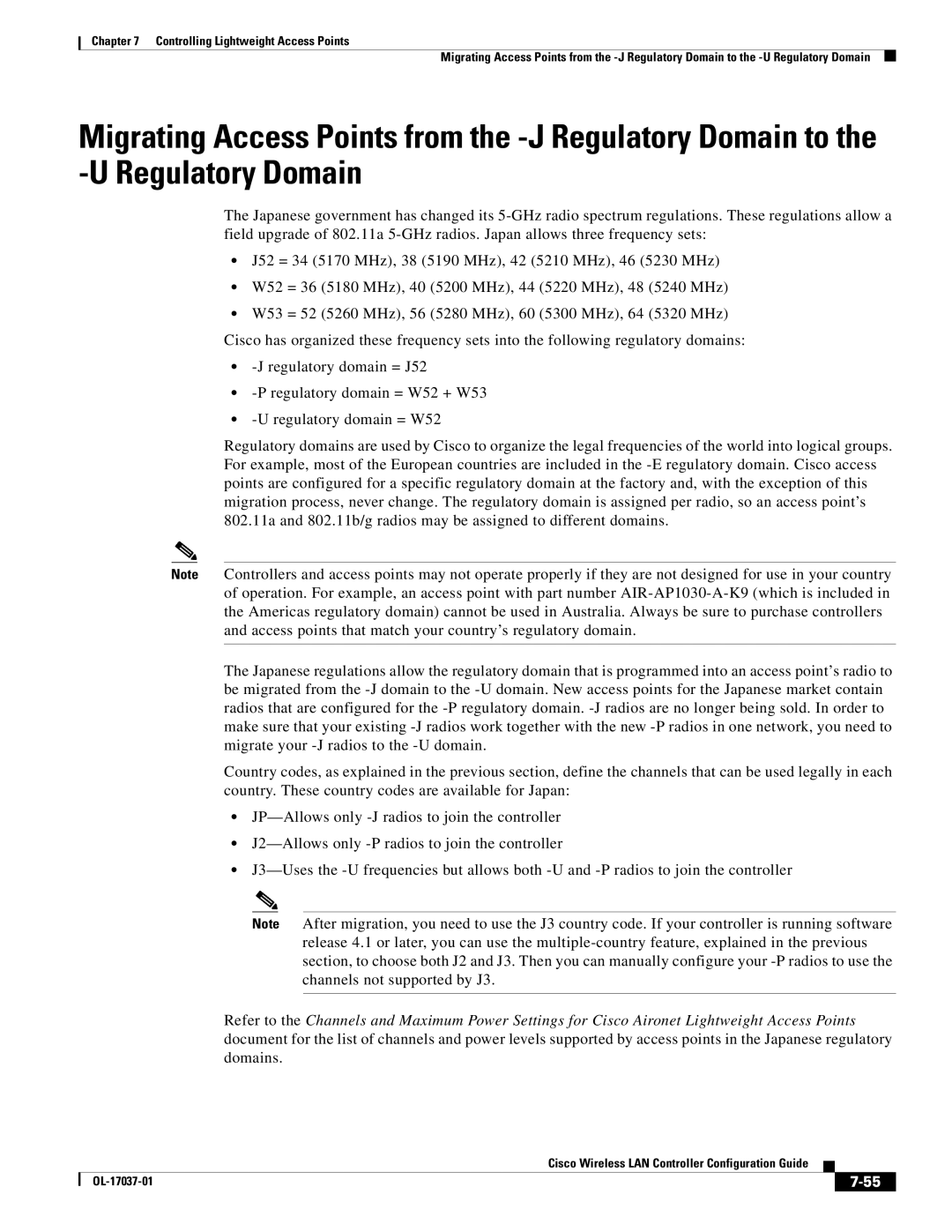Chapter 7 Controlling Lightweight Access Points
Migrating Access Points from the -J Regulatory Domain to the -U Regulatory Domain
Migrating Access Points from the -J Regulatory Domain to the -U Regulatory Domain
The Japanese government has changed its 5-GHz radio spectrum regulations. These regulations allow a field upgrade of 802.11a 5-GHz radios. Japan allows three frequency sets:
•J52 = 34 (5170 MHz), 38 (5190 MHz), 42 (5210 MHz), 46 (5230 MHz)
•W52 = 36 (5180 MHz), 40 (5200 MHz), 44 (5220 MHz), 48 (5240 MHz)
•W53 = 52 (5260 MHz), 56 (5280 MHz), 60 (5300 MHz), 64 (5320 MHz) Cisco has organized these frequency sets into the following regulatory domains:
•-J regulatory domain = J52
•-P regulatory domain = W52 + W53
•-U regulatory domain = W52
Regulatory domains are used by Cisco to organize the legal frequencies of the world into logical groups. For example, most of the European countries are included in the -E regulatory domain. Cisco access points are configured for a specific regulatory domain at the factory and, with the exception of this migration process, never change. The regulatory domain is assigned per radio, so an access point’s 802.11a and 802.11b/g radios may be assigned to different domains.
Note Controllers and access points may not operate properly if they are not designed for use in your country of operation. For example, an access point with part number AIR-AP1030-A-K9 (which is included in the Americas regulatory domain) cannot be used in Australia. Always be sure to purchase controllers and access points that match your country’s regulatory domain.
The Japanese regulations allow the regulatory domain that is programmed into an access point’s radio to be migrated from the -J domain to the -U domain. New access points for the Japanese market contain radios that are configured for the -P regulatory domain. -J radios are no longer being sold. In order to make sure that your existing -J radios work together with the new -P radios in one network, you need to migrate your -J radios to the -U domain.
Country codes, as explained in the previous section, define the channels that can be used legally in each country. These country codes are available for Japan:
•JP—Allows only -J radios to join the controller
•J2—Allows only -P radios to join the controller
•J3—Uses the -U frequencies but allows both -U and -P radios to join the controller
Note After migration, you need to use the J3 country code. If your controller is running software release 4.1 or later, you can use the multiple-country feature, explained in the previous section, to choose both J2 and J3. Then you can manually configure your -P radios to use the channels not supported by J3.
Refer to the Channels and Maximum Power Settings for Cisco Aironet Lightweight Access Points document for the list of channels and power levels supported by access points in the Japanese regulatory domains.
| | Cisco Wireless LAN Controller Configuration Guide | | |
| | |
| OL-17037-01 | | | 7-55 | |
| | | |

